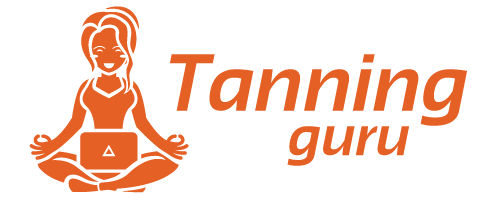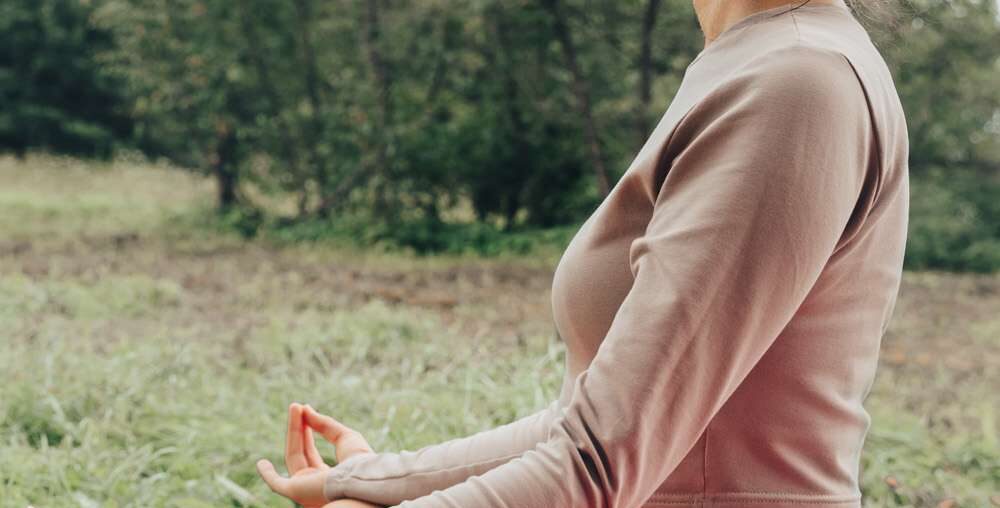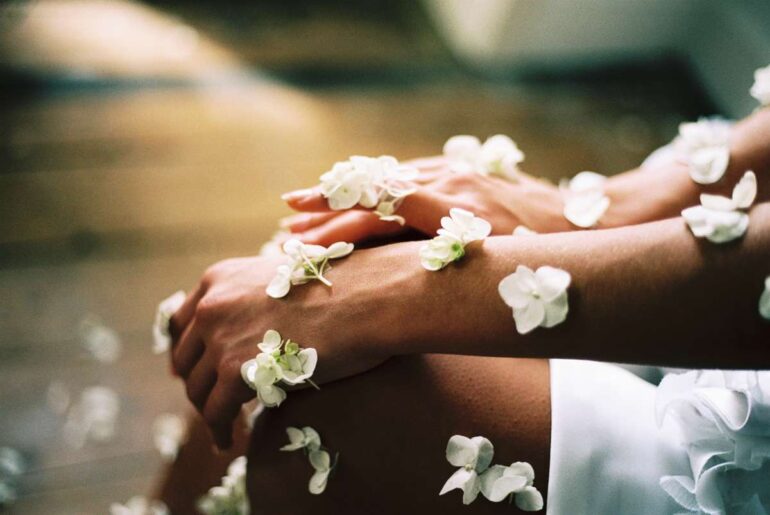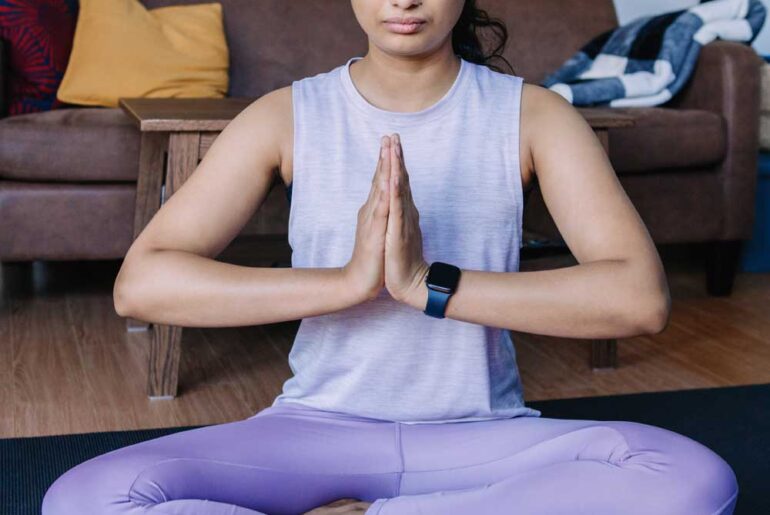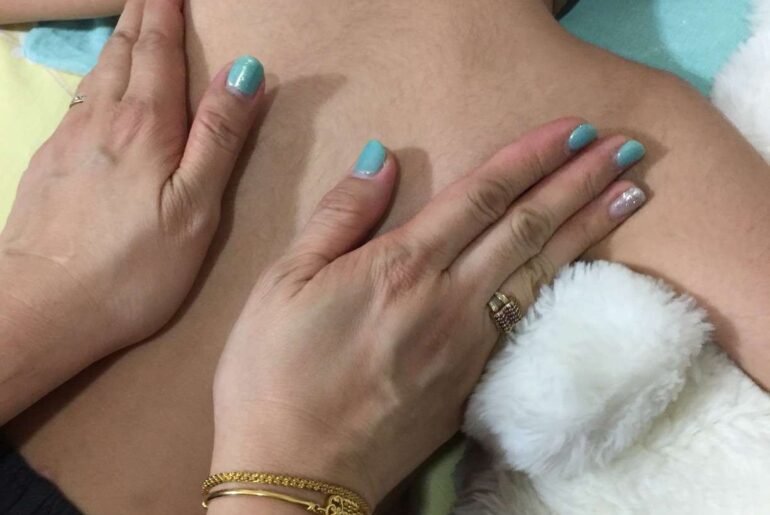Regarding breathing exercises, Pranayama can be considered the most important and ultimate on the list. If you already know about yoga, then you probably have heard of Pranayama and its magical abilities too. It is a kind of yoga technique for breath control.
The name Pranayama is actually derived from two Sanskrit words, “Prana” and “Ayama”. Prana is the breath or life-giving force, and Ayama means extension or expansion. Hence the two words together make the meaning of life control or extension of the life-giving energy.
Pranayama will be the most intimate companion because it is the essential interface between your body and mind and can help you control your emotions and thoughts. We can say that Pranayama is the key yogic secret that will accompany the practitioner into spheres of extreme tranquility and happiness without any doubt.
Importance of Pranayama in Modern Life
Although there might be some hi-tech medical facilities all over the world, we are still leading an unstable and stressful life. That is where Yoga and Ayurveda come in to give you peace of mind and add more value to your life. Practicing Pranayama will help you relieve stress and make you active throughout the day. It allows you to think and focus more on yourself, which in turn raises your self-esteem.
Benefits of Pranayama
- Ancient sages said that Pranayama cleanses thousands of Nadis or channels in our bodies. When practiced daily, it can purify our blood and respiratory system.
- It is believed that Pranayama helps to control aging and obesity.
- Your heart, lungs, and kidneys become more healthy, which in turn keeps many diseases away.
- You’ll get more concentration on your work/study. Also, it improves mental stability and spiritual happiness.
- If you practice Pranayama with other yogic exercises, you can prevent constipation and indigestion problems.
- Pranayama also helps you relieve stress, anxiety, and depression.
Fundamentals of Pranayama
Before starting any kind of exercise or asanas, you should have at least a basic understanding of its purposes and the way it affects our body. Even though the basics of breathing exercises are familiar to everyone, the capacity of Pranayama and its extraordinary power of taking the practitioner to transcendent states are unknown to the majority of people who practice it.
According to Sarira Traya, human beings have three bodies (Sariras). They are:
- Sthula Sarira – the physical body
- Sukshma Sarira – the subtle body
- Karana Sarira – the causal body
Though these three bodies are distinct in nature, they are interrelated in many ways.
Pranayama techniques are developed in a way that they can create alchemical effects on the three bodies and aims at controlling the vital energies in them. There is no evidence that ancient sages who originally created the science of Pranayama advised that prana can be diverted to different areas of the body by physical means alone. Mental concentration is also essential in redirecting the prana to various body regions.
Prana resides in every atomic particle of the body and is the core component that keeps us alive. It is the life-giving energy of living organisms. The more effort we put into improving the individual prana through Pranayama, the more we can control and master the universal aspect of prana.
The Four Bandhas
Bandhas are actions that involve pressure or concentration on specific muscles to redirect the flow of prana into particular areas during the practice of Pranayama or asanas. They have the power of awakening Kundalini. It is imperative to learn bandhas correctly and practice with ultimate care. Combining these bandhas with Pranayama or other breathing exercises enchant the magical effect of uniting prana and Apana in the third chakra.
The following are the four different types of Bandhas used in yoga.
- Mula Bandha
Mula Bandha is the primary bandha in yoga. This bandha is performed by contracting the perineal/vaginal area. Here is the link to a small video explaining the step-by-step guide to this technique. Be aware that it may cause hyperactivity if you practice the steps wrong. So be careful with each step stated in the video. If you face any problems while practicing Mula Bandha, seek guidance from a trained yoga teacher or consult a doctor before starting the practice again.
- Uddiyana Bandha
Uddiyana Bandha starts with exhaling the air completely from the lungs and suspending your breath without letting the air in. Pull the abdomen towards the spine. Your stomach will be pulled in and up into the thoracic cavity due to an internal suction. You can bend forward and place your hands on the knees to do this action with ease.
When practiced correctly, Uddiyana Bandha can make the Kundalini climb up with force. Uddiyana Bandha is also a great exercise that blends well with Pranayama.
- Jalandhara Bandha
Jalandhara Bandha (also known as chin lock) is performed by extending the neck forward and down towards the chest so that the chin can rest on it. Initially, you’ll find it challenging to stay in this posture. But gradually, you’ll improve this, and you can do it with ease. Jalandhara Bandha is capable of bringing the Shakti from Ida and Pingala Nadis to Sushumna (the center of the spine). You can combine this exercise with Pranayama.
- Maha Bandha
Maha Bandha is formed when the three Bandhas mentioned above are combined and performed in the following order: Jalandhara Bandha, Uddiyana Bandha, and Mula Bandha.
The Three Stages of Breathing
The three important components of Pranayama are Puraka, Rechaka, and Kumbhaka. Puraka is the inhalation, and Rechaka is the exhalation. Kumbhaka is the retention of breath after an inhale or the suspension of the breath after an exhale.
When we do normal breathing, there is a tiny gap of milliseconds between the inhalation and exhalation, which usually goes unnoticed. Kumbhaka makes to increase this gap by stopping the breathing routinely and continuously through different types of breathing exercises, including Pranayama. If you spend more time on Pranayama and Kumbhaka, you’ll get more concentration and better control over the mind.
Mudras for Pranayama
Different types of Mudras are used while performing meditation, Pranayama, and asanas. A Mudra is a hand gesture that can direct our internal energy flow to particular areas of the body and brain. That is because the different areas of the hands are connected with different areas of the body. When we form a Mudra by hand, we arouse specific regions of the brain, and the newly formed energy circuits in the hands will direct prana to different areas of the body and brain.
The following are the seven commonly used mudras in yoga.
- Gyan Mudra
- Vayu Mudra
- Shunya Mudra
- Prana Mudra
- Surya Ravi Mudra
- Buddhi Mudra
- Dhyana Mudra
- Vishnu Mudra
Preparatory Recommendations
It is crucial that if you have any health problems, you consult with a doctor before starting any kind of exercise. We strongly recommend consulting with an experienced yoga teacher to make a custom yoga plan according to your needs and health conditions.
If you’re a person with high blood pressure, you should not hold your breath after inhalation, and if you have low blood pressure, you should not suspend your breath after exhalation.
The most appropriate time for practicing Pranayama is the morning before breakfast or 4-5 hours after eating breakfast.
When performing Pranayama, it is recommended to use a blanket or yoga mat to make your posture more comfortable. You can sit in either Padmasana or Siddhasana (Siddha Yoni Asana for women) when doing Pranayama. If these postures are challenging, you can sit in any crossed-legged position.
Always ensure that your back remains erect and the spine perpendicular to the floor. It can create a lot of adverse effects if your back is hunched over while performing Pranayama. Also, make sure that your mind is calm and that there is nothing around your place that can distract your mind. Concentration is significant in every yoga practice.
Pranayama Techniques
Here we’ve listed the various Pranayama techniques mentioned in the Hatha Yoga Pradipika (a 500-year-old manual written in Sanskrit). It would help if you practiced them only under the guidance of an experienced yoga teacher or guru. If you are a beginner in yoga, practicing the Pranayama techniques by reading this article is not recommended. You can use this information to educate yourself about these breathing techniques.
Nadi Shodhana Pranayama
Used to purify the Nadis (energy channels) in the body. This Pranayama technique can be performed by breathing through alternate nostrils (which begins and ends with the left nostril). The left nostril cleanses the Ida Nadi, and the right nostril cleanses the Pingala Nadi. If balanced correctly, this technique can awaken Kundalini.
How to Perform Nadi Shodhana Correctly?
- Sit in a crossed-legged position. Padmasana or Siddhasana will do the best.
- Start with a few deep breaths and make sure that your mind is calm. Also, keep your eyes closed.
- Make Vishnu Mudra and close your right nostril with your thumb. Now inhale through your left nostril.
- Now release your thumb and close your left nostril with your ring finger. Now exhale out through the right nostril.
- Continue in this position and inhale through your right nostril while the left is closed.
- Release your ring finger and close your right nostril with your thumb. Now exhale out through the left nostril. You’ve completed the first cycle.
- Repeat this for 5-10 rounds, and you can release the hand Mudra once all the cycles are completed.
- When you combine Nadi Shodhana with Kumbhaka, the results are magical.
Surya Bhedana Pranayama
In our body, Pingala Nadi represents the energy of the sun and is located on the left side of the body. Surya Bhedana enchants the Pingala Nadi and stimulates the left side of the brain. It can also balance all the doshas in us. This Pranayama technique is performed by inhaling through the right nostril and exhaling through the left nostril after retaining the breath (Kumbhaka) for some time.
How to Perform Surya Bhedana Correctly?
- Sit in a comfortable position such as Padmasana or Siddhasana.
- Make your back erect and your spine perpendicular to the floor. Also, keep your eyes closed.
- Form Vishnu Mudra by hand and close your left nostril with your ring finger. Now inhale gently and deeply.
- Close your right nostril with the thumb (both right and left nostrils need to remain closed).
- Hold your breath and perform Jalandhara Bandha, followed by Mula Bandha (you can hold your breath as long as you can).
- Now release the Bandhas and open your left nostril.
- Exhale slowly. You’ve completed one cycle of Surya Bhedana.
- Repeat this for 5-10 rounds and release the hand Mudra once all the cycles are completed.
Bhastrika Pranayama
In this Pranayama, one has to do both inhalation and exhalation very fast. It generates heat within the body, which can cure all the problems associated with Kapha Dosha. That is one of the Pranayama techniques useful for people with depression and anxiety. It is not recommended to perform Bhastrika during summer days and nights. Also, never do this technique on a full stomach. If you’re pregnant or have high blood pressure, then practicing Bhastrika is not recommended.
How to Perform Bhastrika Correctly?
- Sit in a comfortable position such as Padmasana or Siddhasana.
- Take a deep breath and fill your lungs as much as possible.
- Hold the breath for 5-6 seconds and exhale out completely.
- You can perform this at a moderate or high speed as per your capacity.
- Do this for 5-10 minutes a day or stop when you’re tired (maximum 15 minutes).
Bhramari Pranayama
While doing this Pranayama, the sound of a humming bee will be produced (for both inhale and exhale). This technique is beneficial for people suffering from stress, anxiety, and anger. It is not recommended for pregnant and menstruating women.
How to Perform Bhramari Correctly?
- Sit in a comfortable position such as Padmasana or Sukhasana.
- Hold your back straight and erect. Also, keep your mouth and eyes closed.
- Place your hands on the knees. The upper body weight should be on the knees.
- Now inhale deeply and hold your breath as long as you can.
- Perform Jalandhara Bandha and Mula Bandha for a while and release the Bandhas.
- Now raise the head and sit in an upright posture.
- Close your ears with the index or middle finger. The elbows should be kept to the side to make your chest open.
- Now exhale through the nose with the sound of a humming bee. You’ve completed one cycle of Bhramari Pranayama.
- Repeat this 9-10 times.
Ujjayi Pranayama
Through this Pranayama, you can achieve a superior level of concentration and better control over the mind. Practicing this technique daily helps reduce blood pressure. So this one is not recommended for people with low blood pressure. It also has therapy applications such as treating insomnia, tension, and heart diseases.
How to Perform Ujjayi Correctly?
- Sit in a crossed-legged position and keep your back straight.
- Gently close your eyes and mouth.
- Perform deep inhalations and exhalations through the nose. You should make the sound of an ocean when you exhale.
- Concentrate on the sound and make the inhalations deep so that they can fully fill your lungs.
- Practice it for 10-15 minutes a day. Or stop when you’re tired (maximum 15 minutes).
Sitkari Pranayama
In this Pranayama, the body heat is expelled out. So you can perform this during the summer to reduce the body heat. This technique can balance the secretions of our genital organs and improve the functions of the whole endocrine system. When practiced daily, it reduces blood pressure and hypertension. Sitkari can give you the results of an antipyretic medication if you’re suffering from fever.
How to Perform Sitkari Correctly?
- Sit in a comfortable position on the floor (Padmasana or Sukhasana recommended).
- Perform normal breathing for 1-2 minutes. Let your body and mind relax.
- Now touch your upper and lower teeth together. Keep your lips open wide.
- Start inhaling deeply and focus on the hissing sound produced by the breath.
- Hold the breath for a few seconds and exhale gently through the nose (keep your mouth closed while breathing out).
- Repeat this 10-15 times.
Sitali Pranayama
Sitali is also one of the breathing exercises that can cool down your body. That has the same effects as Sitkari Pranayama. To get the ultimate results, combine Sitali Pranayama with Kumbhaka and Mula Bandha.
How to Perform Sitali Correctly?
- The first two steps are the same as that of the Sitkari Pranayama.
- Open your mouth and form an “O” shape with your lips.
- Now curl your tongue lengthwise to form a tube and extend it out from the mouth.
- Inhale deeply through the tongue and fill the lungs as much as possible.
- Perform Kumbhaka for a few seconds.
- Now bring the tongue in and close your mouth.
- Exhale out completely; you’ve completed one cycle of Sitali.
- You can repeat this up to 20 times.
Murcha Pranayama
This breathing technique helps you achieve happiness of mind. In this Pranayama, one can make a prolonged elation and semi-conscious swoon. Murcha is not recommended for everyone and should be performed only under the supervision of a yoga guru.
How to Perform Murcha Correctly?
- Sit in a comfortable position such as Padmasana.
- Take a deep breath gently and slowly through the mouth.
- Now focus on the conscious mind between your eyebrows.
- Place your chin tightly in the jugular notch.
- Perform Jalandhara Bandha for some time and exhale slowly.
- Repeat this 10-15 times.
Plavini Pranayama
In this Pranayama, one can experience the feeling of floating. It is said that an expert of this technique can float on water just like a lotus leaf. Practicing daily can cause all the toxins in our body to be expelled out, and the blood becomes pure. You should perform Plavini Pranayama only under the guidance of an experienced yoga teacher.
How to Perform Plavini Correctly?
- Sit in a comfortable position such as Padmasana or Siddhasana.
- Keep your head, neck, and back in a straight line.
- Now close your eyes, inhale through your mouth, and send the breath to your stomach.
- Keep inhaling and fill your lungs and stomach to the fullest. Your stomach will become bloated.
- Perform Kumbhaka and hold your breath as long as possible.
- Exhale the air slowly, and you’ll get a spark-like feeling in the stomach. That is normal.
- Keep holding your breath for some time and exhale the remaining air from the body with force.
- Repeat this 5-10 times as per your capacity.
Pranayama: The Correct Sequence
Following the correct sequence when practicing Pranayama or any kind of yogic exercise is essential. It is highly recommended to perform asanas before Pranayama. If you’re planning to practice asanas directly after Pranayama, starting with 15-30 minutes, Shavasana will help you relax your body and mind. Be aware that Pranayama techniques are helpful when you cultivate a habit of doing them daily.
Conclusion
Even though hundreds of articles and books describe yoga and meditation, most yogic practices are unknown to the people living in the modern world. People are neglecting yoga, mainly due to a lack of awareness and training. In ancient times, there were a lot of yoga training centers available. Now time has changed, and everyone is busy with their work and daily routines.
Pranayama can be a life changer if you can spend a little time from your daily life. You can begin with any of the easy methods, and once you see the results, you’ll get more confidence and realize the magical power of Pranayama. It is highly recommended that you should begin your practice of Pranayama only under the guidance of an experienced yoga teacher and proceed gradually with ultimate care.
